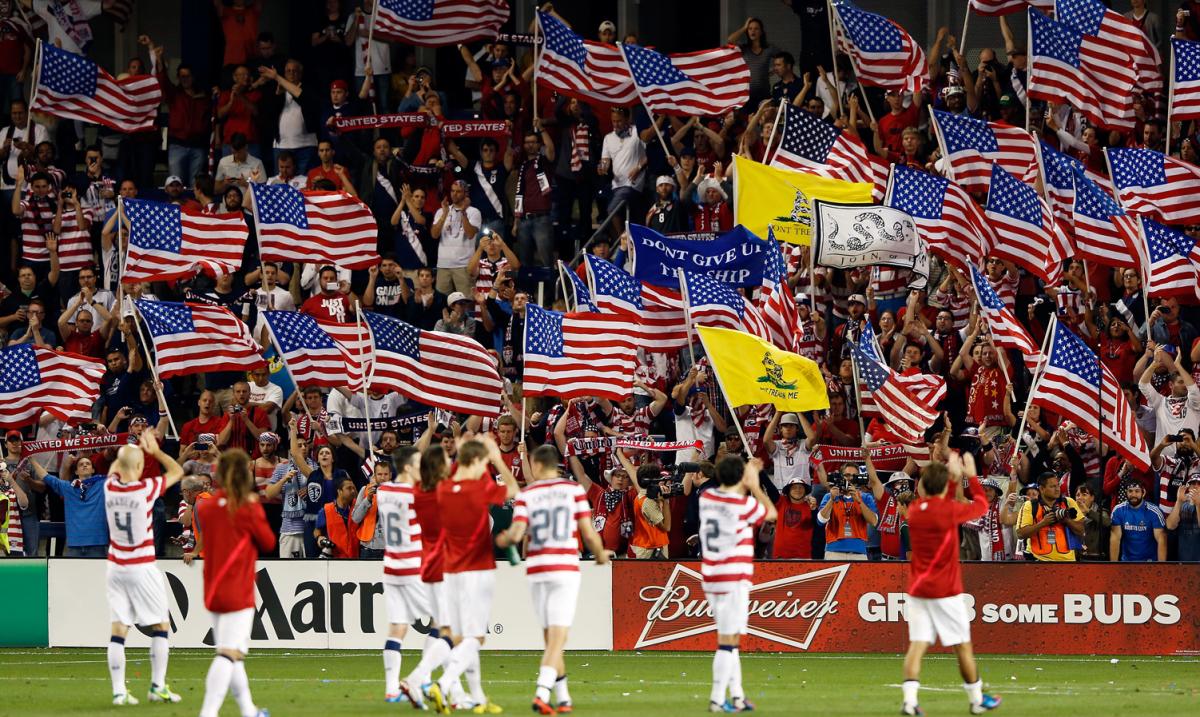The U.S. Men’s National Team has already secured its 2014 World Cup bid. We know they’ll be in Brazil next June, but what’s next for the team in the meantime, and what does the squad need to do in order to solidify their status as not merely another entrant, but a legitimate threat for a deep run in Brazil?
After a victory over Jamaica in Kansas City on Friday, October 11, the USMNT has improved its record since the start of June to 14-1. It’s an impressive stretch, highlighted by their CONCACAF Gold Cup win, and more importantly, their 2-0 performance over a struggling Mexican team in September, a familiar outcome in their comfy Columbus confines.
Jurgen Klinsmann has been able to develop a roster with more depth and versatility than ever before. The U.S. Head coach has pushed a system where no spot is secure, and everyone must be ready to contribute, and he has constantly tweaked the lineup producing an endless array of potential starting rosters. It’s paid dividends, and the team is no longer Landon Donovan, Tim Howard, and a hope and a prayer.
Clint Dempsey, now back in the MLS with the Seattle Sounders, has of course already proven himself to be a world-class forward. Now though, Jozy Altidore is playing better than he ever has, finally living up to his potential, and Eddie Johnson apparently has a homing beacon attached to the top of his head, making him an invaluable weapon in the box on set pieces. DeMarcus Beasley has found the fountain of youth, and a bevy of young contributors have emerged, allowing the team to continue winning even in the absence of premiere players such as Michael Bradley.
Depth has become an unheard of strength for the U.S. men’s soccer team, and for perhaps the first time, there’s not room on the pitch for every class player on the team all at once. Now though, I believe the squad needs to start fine-tuning in the opposite direction, finding the core players who should always be on the pitch at the start of the match.
Klinsmann may never put the same starting 11 out for two games in a row, but a more consistent starting troupe would be a superior option come the World Cup, while enabling a flexible cast of subs to be deployed depending on match-ups and game situations.
There’s one more official World Cup qualifying match left, a trip to Panama on October 15, and then another seven or eight months for the team, and its individual players sent back to their clubs, to get into top form. It will be crucial for the team’s key contributors both in MLS and in leagues abroad to get consistent playing time to keep both fitness and confidence peaking, and skills sharp. Once you make it to Brazil, anything could happen, and the team has a combination of veteran leadership, depth and skill that could make waves in the 2014 World Cup.
*This article was first published on Yahoo Sports on October 12, 2013.


